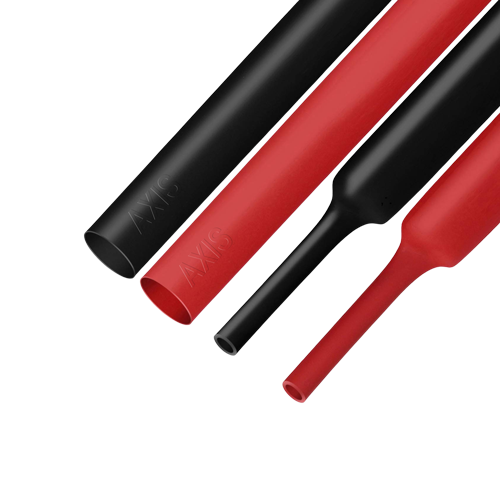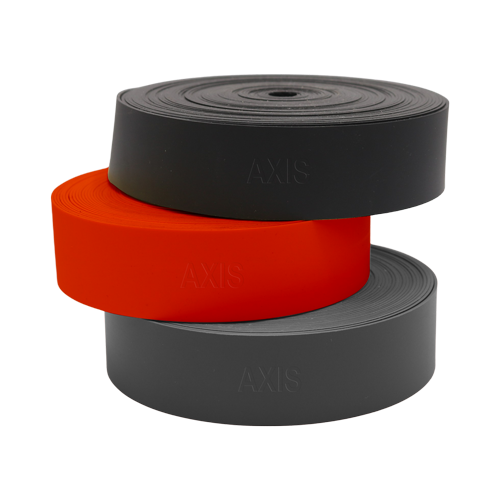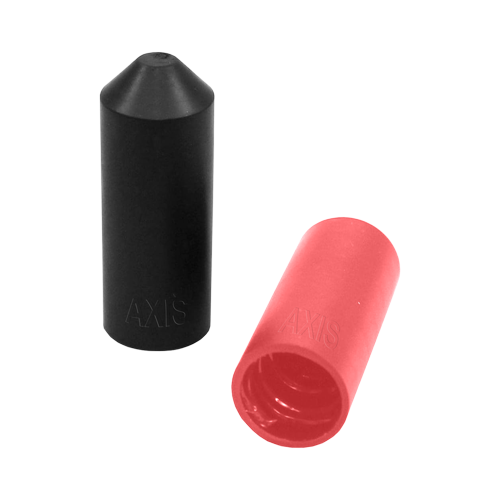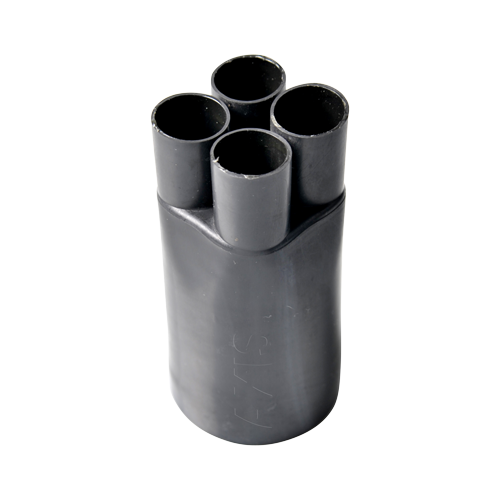Origin
Researchers and engineers in the mid-20th century pioneered the concept of heat shrink tubing as they sought novel methods to protect and insulate electrical components. In the 1950s and 1960s, Raychem Corporation, founded by Paul Cook in 1957, played a pivotal role in inventing and patenting heat shrink technology. During this period, Raychem engineer Ray Borelli developed the first practical heat-shrinkable tubing.
The 1970s witnessed the commercialization and widespread adoption of heat shrink tubing across various industries, including electronics, automotive, aerospace, and telecommunications. Companies like Raychem led the charge, refining manufacturing processes and expanding product lines. From the 1980s through the 1990s, significant technological advancements propelled heat shrink tubing forward. New materials emerged, offering enhanced performance characteristics such as improved flexibility, resistance to chemicals, and higher operating temperatures.
In the 2000s to the present day, the market for heat shrink tubing has diversified and experienced significant growth. Advanced polymers and elastomers have facilitated the development of specialized heat shrink products tailored to specific industry needs. Moreover, innovations in heat shrink technology have led to the incorporation of features like adhesive lining for waterproofing and improved environmental protection.
Throughout its evolution, heat shrink tubing has transformed from a niche product into a versatile solution utilized across a broad spectrum of applications including electrical insulation, cable bundling, strain relief, and environmental sealing. Its continual development reflects the persistent demand for reliable and efficient solutions across diverse industries.
Introduction – What is a Heat Shrink Tube?
Heat Shrink is a versatile thermoplastic elastomeric layer which can be applied to cabling and components. The tubing is designed to shrink into place and become rigid when heat is applied, providing a durable and protective coating. This characteristic allows it to repair a damaged or exposed length of wire; protect the wire from dust, chemicals, moisture or abrasion; relieve the strain applied by cables or wires held at tension; bundle multiple wires into a single unit and simplify the colour coding of wires. Given the range of possible uses, it is available in a variety of materials, sizes and colours.
All the heat shrink tubes are made of Polymeric Shape Memory Material, which can be either a single component or multiple components such as Polyolefins, PVC, EVA, etc.
The core of heat shrink tubing lies in its material composition, typically made of Polymeric Shape Memory Material, it can be either a single component or multiple components such as Polyolefins, PVC, EVA, etc. Each material offers unique properties. For instance, Polyolefin, commonly used due to its balance of flexibility, strength, and chemical resistance, can withstand a wide range of temperatures, making it suitable for diverse applications.
The manufacturing process starts from choosing the proper raw material depending on the application. Followed by preparing the right formulation and then blending along with standard extrusion or moulding techniques. The tubing/termination kits and end caps are then subject to a secondary process, often proprietary, involving heat and stretching to expand their diameter. This expansion sets a ‘memory’ in the material, allowing it to revert to its original size upon reheating the same in metal-like shape memory alloys like nitinol, etc.
When heat is applied to the expanded tubing, it shrinks radially but not significantly along its length, conforming tightly to the underlying material. This property is crucial for ensuring a secure fit and consistent insulation. The shrink ratio is key for heat-shrink products. It shows how much the product can tighten around something when heated. Typically, the width can shrink by 50% or more, creating a secure fit. This makes the product useful for sealing or covering objects tightly.
Types of Heat Shrink Tubing
Different types of heat shrink tubing, each with its unique set of characteristics and manufacturing nuances, cater to a broad spectrum of industrial needs. Let’s understand each one in detail:
-
Single-wall Tubing
Single-wall tubing is typically made from materials such as Polyolefin, PVC, or Fluoropolymers. It consists of a single layer of heat-shrinkable material and offers good electrical insulation, protection from environmental factors like moisture and dust, and abrasion resistance. Its shrink ratio commonly ranges from 2:1 to 4:1, allowing it to fit snugly over a variety of objects. The manufacturing process includes extrusion of the base material into a tube, mechanical or controlled heat application for expansion, and sometimes cross-linking to enhance physical properties. Single-wall tubing is ideal for insulating, bundling, and protecting wires and components in electrical and electronic equipment.
-
Double-wall Tubing
Double-wall tubing features an inner adhesive layer and an outer material layer, typically Polyolefin or PVC. The outer layer provides mechanical protection, while the inner layer offers sealing properties, making the tubing resistant to moisture and contaminants for a watertight seal upon heating. The manufacturing process involves co-extrusion of the inner and outer layers and may include cross-linking to improve durability. This type of tubing is commonly used in automotive and marine applications where a robust, moisture-proof seal is required.
-
Adhesive-lined Tubing
Adhesive-lined tubing combines a heat-shrinkable outer tube with an inner layer of thermoplastic adhesive. It provides a secure seal against water, oils, and other chemicals and typically has a shrink ratio of around 3:1 or 4:1 for a tight seal over irregular shapes. The manufacturing process includes co-extrusion and lamination of the adhesive layer inside the heat shrink tubing. This type of tubing is widely used in cable splices, terminations, and repairs where an environmental seal is necessary.
-
Tapes and Wraparounds

Heat shrink wrap is a variant of heat shrink tubing made to wrap around cabling during repair and splicing operations. Typically, it has a shrink ratio of 3:1 and provides a firm seal resistant to moisture, chemicals and fungal contamination. Heat shrink tape works on similar principles to tubing and is typically used in conjunction with it for insulating seals and enclosures.
-
Moulded
Moulded heat shrink tubing refers to a specialized type of tubing that is pre-formed or shaped into a specific configuration or design before the shrinking process. This pre-formed shape allows for precise fitting over components, providing enhanced protection and insulation in various applications.
-
Cable Joint
A cable joint heat shrink tubing is a specialized type of tubing used to encapsulate and protect cable joints, providing insulation against moisture, corrosion, and mechanical stress. It ensures a secure and reliable connection, enhancing the longevity and performance of electrical cables in various applications.
-
Cable Termination
Cable termination heat shrink tubing is a specialized type used to insulate and seal cable ends, protecting against moisture, corrosion, and mechanical damage. It forms a tight, durable seal around the termination point, ensuring reliable performance and extending the lifespan of the cable assembly.
-
Heavy Wall Tubing
Heavy Wall Tubing is designed for rugged environments, providing superior mechanical strength. It is commonly used in underground, direct burial, and industrial applications.
-
High-Temperature Tubing
High-temperature tubing is made from materials like Viton and Silicone, capable of withstanding extreme temperatures. These types of tubes are ideal for applications in aerospace, automotive, and industrial settings where high-temperature resistance is crucial.
-
Kynar Tubing
Kynar Tubing is made from Polyvinylidene fluoride (PVDF), offering excellent chemical resistance, cut-through resistance, and low smoke properties. It is suited for applications in the military, aerospace, and automotive industries.
-
Specialty Tubing
This speciality tubing includes variants like spiral-cut tubing for flexible routing and breakouts and conductive tubing for electromagnetic protection. These are used in applications requiring specific properties like flexibility, conductive shielding, or unique environmental resistance.
Talk to our engineers!
International Standards for Heat Shrink Tubing
- UL 224/CSA C22.2 No. 198.1: This standard by Underwriters Laboratories (UL) and Canadian Standards Association (CSA) applies to extruded heat shrink and nonheat shrink electrical insulating tubing. It covers dimensional, physical, and electrical properties. The standard specifies temperature ratings (for example, 90°C or 105°C for PVC, 105°C or 125°C for polyolefin), VW-1 flame ratings, and voltage ratings (150V, 300V, or 600V) based on wall thickness.
- IEC 60684-3-216:2019: This standard specifies requirements for four types of heat shrinkable, flame-retarded, limited-fire-hazard sleeving with a thermal endurance rating of 105 °C. It includes classifications for thin wall (Class A), medium wall (Class B and D), and thick wall (Class C) sleeving, each with specific shrink ratios and internal diameters. The standard also outlines the colours available for these sleeves and states that custom items complying with the property requirements, excluding dimensions and mass, are considered to comply with this document
- ASTM D922: This American Society for Testing and Materials specification applies to nonrigid PVC tubing used for electrical insulation. It includes dimensional and physical properties and is categorized into different grades based on the brittle point temperature (e.g., Grade A for general-purpose with brittle point <= -30°C, Grade B for low temperature, and Grade C for high-temperature applications).
- ASTM D3150: Another ASTM specification, this time for heat-shrinkable PVC tubing used for electrical insulation. It categorizes the tubing into types based on whether it’s non-cross-linked or cross-linked, with different shrink temperatures for each type (135°C for non-cross-linked PVC and 175°C for cross-linked PVC).
Materials used in manufacturing Heat Shrink Tubing
The choice of material for heat shrink tubing plays a crucial role in its performance and suitability for various applications. Small changes in material selection can significantly affect the tubing’s physical, chemical, and electrical properties. Here are some common Materials used for Heat Shrink Tubing.
- Polyolefin – Polyolefin, especially cross-linked polyolefin, is the most commonly used material for heat-shrink tubing. It offers good environmental protection and excellent physical resistance, good electrical properties, and a high degree of flexibility. Polyolefin is known for its shrink ratio (typically 2:1 or 3:1).
Sr. no. Operation Temperature (oC) 1 Operation Temperature -55oC – 135oC 2 Shrink Temperature 70oC 3 Full Recovery Temperature >110oC - Fluoropolymers (PTFE, FEP, PFA, ETFE) – Fluoropolymers like PTFE, FEP, PFA, and ETFE are chosen for their high thermal resistance, excellent chemical resistance, and electrical properties. They are capable of withstanding extreme temperatures and harsh chemical environments.
- Polyvinyl Chloride (PVC) – PVC tubing is flexible, flame-retardant, and offers good electrical insulation properties. It has a lower shrink temperature compared to polyolefin and fluoropolymers.
Sr. no. Operation Temperature (oC) 1 Operation Temperature -30oC – 105oC 2 Shrink Temperature 135oC 3 Full Recovery Temperature >150oC - Viton – Viton, a type of fluoroelastomer (fluro polymer rubbers), is known for its exceptional heat and chemical resistance. It maintains flexibility and resistance in extreme temperatures and exposure to fuels, lubricants, and acids.
Sr. no. Operation Temperature (oC) 1 Operation Temperature -55oC – 200oC 2 Shrink Temperature 100oC 3 Full Recovery Temperature >15oC - Ethyl Vinyl Acetate (EVA) – Ethylene Vinyl Acetate (EVA) is a copolymer with excellent thermal stability, flexibility, and resistance to environmental stress, commonly used in heat shrink applications due to its ability to shrink uniformly when heated.
- Silicone Rubber – Silicone rubber heat shrink tubing is highly flexible, has a wide temperature range, and offers excellent resistance to ozone, UV, and radiation. It is also biocompatible.
Sr. no. Operation Temperature (oC) 1 Operation Temperature -50oC – 200oC 2 Shrink Temperature 90oC – 110oC 3 Full Recovery Temperature >135oC - Calcium Stearate – Calcium stearate, an alkaline earth metal soap, serves as a lubricant and stabilizer, reducing friction and improving processing, crucial in heat shrink processes due to its low solubility and thermal stability.
- Zinc Stearate – Zinc stearate, a chemical compound (Zn(C17H35COO)2), acts as a lubricant and heat stabilizer, reducing friction and controlling heat shrinkage in polymer processing.
- Pu and Lu Waxes – Pu and Lu waxes are low-melting-point compounds with high coefficients of thermal expansion, used in heat shrink applications for their ability to contract uniformly upon heating, providing insulation and protection to enclosed objects.
- UV Stabilizers – These refer to compounds integrated into the material to mitigate ultraviolet degradation, maintaining mechanical and optical properties, extending the lifespan, and enhancing durability in outdoor applications.
- Anti-oxidants – Antioxidants are chemical compounds that inhibit oxidation reactions, preserving the integrity and performance of the material by scavenging free radicals and preventing degradation, thereby enhancing durability and longevity in various applications.
- Cross-Linking Agents – Cross-linking agents facilitate the formation of covalent bonds between polymer chains, enhancing heat shrink performance by improving mechanical strength, thermal stability, and chemical resistance.
- Fire Retardants – Fire retardants are materials applied to surfaces to inhibit or delay combustion, characterized by their ability to reduce the flammability and spread of fire by releasing water vapour or forming a protective layer when exposed to heat.
- Moisture Absorbents – Moisture absorbents are materials capable of attracting and retaining moisture from the environment, typically exhibiting high hygroscopicity, aiding in the reduction of humidity-related issues during the heat shrink process, thereby enhancing performance and reliability.
Heat Shrinkable Products
-
End Caps
 Heat shrink end caps are integral for use with heat shrink tubing, and serve to seal, safeguard, and insulate the extremities of exposed cables and wire ends against the incursion of water or moisture. Fabricated from polymeric substances like polyethylene, these caps contract radially upon heat exposure, ensuring a tight fit over cable terminations. The optimal temperature for achieving this thermal contraction is approximately 275°F (135°C). These end caps are recognized for their exceptional resilience to weathering, moisture, contamination, and challenging environmental scenarios, aligning with the IP 68 standard for Ingress Protection, which denotes their high level of defence against dust entry and submersion in water.
Heat shrink end caps are integral for use with heat shrink tubing, and serve to seal, safeguard, and insulate the extremities of exposed cables and wire ends against the incursion of water or moisture. Fabricated from polymeric substances like polyethylene, these caps contract radially upon heat exposure, ensuring a tight fit over cable terminations. The optimal temperature for achieving this thermal contraction is approximately 275°F (135°C). These end caps are recognized for their exceptional resilience to weathering, moisture, contamination, and challenging environmental scenarios, aligning with the IP 68 standard for Ingress Protection, which denotes their high level of defence against dust entry and submersion in water. -
Insulated Wire Connectors
Insulated wire connectors, utilizing heat shrink tubing, offer a robust solution for electrical connections. These connectors incorporate a polyolefin tube that contracts upon heating, creating a waterproof, insulating seal. This thermal contraction ensures a tight, secure fit around wires, significantly enhancing connection reliability and protection against environmental factors. The tubing’s insulation property is critical, reducing the risk of short circuits by preventing electrical conductance between adjacent wires or conductive surfaces, making them essential in maintaining electrical integrity and safety.
-
Cable Sleeves
Heat-shrinkable sleeves, made from a specialized plastic blend, including cross-linkable polyolefin (polyethylene or polypropylene), serve as a protective covering for wires, hoses, and various components requiring dryness and protection. When heated, typically using a hot air blower or heat gun, these sleeves contract to about half their original size, snugly conforming to the contours of the item they encase. As the sleeve contracts, its integrated adhesive melts, spreading across the sleeve to form a seal that guards against moisture, dirt, and debris, ensuring a robust, corrosion-resistant bond with the underlying material and any factory-applied coatings.
-
Waterproof Splice Covers
Heat shrink waterproof splice covers are essential components designed to protect and insulate electrical splices from water and environmental elements. Comprising a durable polyolefin material, these covers shrink upon application of heat, ensuring a tight, seamless fit around the splice. Integrated with a meltable adhesive lining, they provide a dual-action seal by both mechanically conforming to the splice and chemically bonding to it, thus offering superior waterproofing. Ideal for outdoor and harsh environment applications, these splice covers enhance the reliability and longevity of electrical connections by preventing corrosion and electrical failures due to moisture ingress, making them a critical safeguard in maintaining electrical integrity.
-
Wire Identification Sleeves
Wire identification sleeves are specialized markers used in electrical wiring and cable management to facilitate easy identification, organization, and traceability of individual wires or cables. These sleeves are typically made from durable materials like polyolefin or PVC and are designed to fit snugly over the wire or cable. Available in a variety of colours and sizes, they can be printed with alphanumeric characters, symbols, or barcodes, allowing for a wide range of labelling possibilities. This identification system is crucial for maintenance, troubleshooting, and safety, as it helps technicians quickly locate and distinguish between different circuits or functions within complex electrical systems, significantly reducing the risk of errors or accidents.
-
Breakout Cable

A breakout cable, enhanced with heat shrink tubing, is designed for organizing and protecting multiple cable runs. This setup involves branching individual cables out from a central point, where heat shrink tubes are applied at the division points to provide insulation and strain relief. The heat shrink ensures a durable, tight seal around each cable, safeguarding against abrasion, moisture, and environmental hazards. This method enhances cable management, ensuring each branch is individually insulated and secured, optimizing both performance and safety in complex wiring systems.
Applications of Heat Shrink Termination Kits
In application, heat shrink tubing is used to electrically insulate the conductor preventing shorts and electrical failures. It also provides physical protection against abrasion, cutting, moisture, and chemical contaminants. Its ability to bundle wires enhances organisation and reduces space usage, a critical factor in complex electrical systems.
The tubing’s colour-coding capability facilitates easy identification of phases and maintenance in large-scale electrical installations. Moreover, some types of heat shrink tubing come with an adhesive lining, creating a sealed connection that further reinforces the protection against environmental factors. Here are some common applications:
- Electrical Utilities: In power transmission and distribution, termination kits are used to terminate cables at junction points, transformers, switchgear, and other electrical equipment.
- Industrial Settings: Factories and plants use these kits for terminating power cables that supply machinery, motors, and control equipment.
- Renewable Energy Systems: In solar or wind energy installations, termination kits are used to connect cables from solar panels or wind turbines to inverters and other system components.
- Telecommunications: Used in telecommunication networks for the termination of signal-carrying cables.
- Commercial and Residential Buildings: For safely terminating electrical cables in building power systems, especially in areas where cable joints are exposed to environmental factors.
Conclusion: The Indian Market
The heat shrink tubing market in India is diversified and competitive, featuring a blend of international and domestic players. Key international companies like TE Connectivity and 3M compete alongside prominent Indian firms such as Yamuna Cables and Vintech Polymer Pvt Ltd. This mix underscores the strategic importance of India’s growing infrastructure and the demand for reliable electrical and insulation solutions.
The product range in the Indian market spans across various voltage requirements, from low voltage (LV), typically 0-2 kV, to high voltage (HV), up to 66 kV, indicating a robust demand across multiple applications, from residential and commercial wiring to high-end industrial and power distribution systems.
Thank you for reading the blog, Axis is a leading manufacturer and supplier of Electrical Components to over 80+ Countries. Talk to our industry expert by visiting our Contact Us section. You can also watch our videos by our experts – click here.
Follow us on LinkedIn for regular updates on our Products!


 Heat shrink end caps are integral for use with heat shrink tubing, and serve to seal, safeguard, and insulate the extremities of exposed cables and wire ends against the incursion of water or moisture. Fabricated from polymeric substances like polyethylene, these caps contract radially upon heat exposure, ensuring a tight fit over cable terminations. The optimal temperature for achieving this thermal contraction is approximately 275°F (135°C). These end caps are recognized for their exceptional resilience to weathering, moisture, contamination, and challenging environmental scenarios, aligning with the IP 68 standard for Ingress Protection, which denotes their high level of defence against dust entry and submersion in water.
Heat shrink end caps are integral for use with heat shrink tubing, and serve to seal, safeguard, and insulate the extremities of exposed cables and wire ends against the incursion of water or moisture. Fabricated from polymeric substances like polyethylene, these caps contract radially upon heat exposure, ensuring a tight fit over cable terminations. The optimal temperature for achieving this thermal contraction is approximately 275°F (135°C). These end caps are recognized for their exceptional resilience to weathering, moisture, contamination, and challenging environmental scenarios, aligning with the IP 68 standard for Ingress Protection, which denotes their high level of defence against dust entry and submersion in water.





